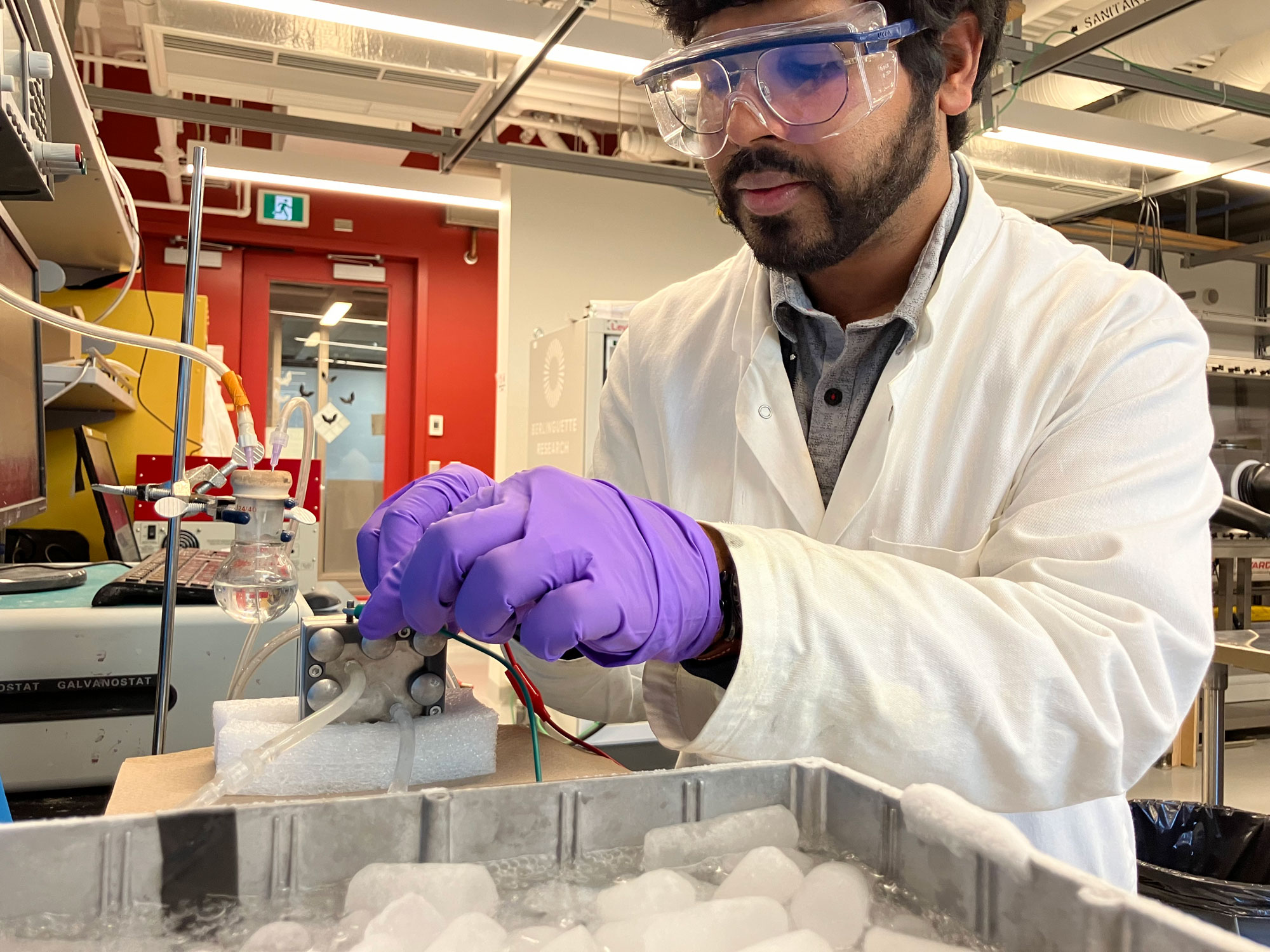Off-the-shelf thermoelectric generators can upgrade CO2 into chemicals. The combination could help us colonize Mars
November 6, 2024

November 6, 2024

Readily available thermoelectric generators operating under modest temperature differences can power CO2 conversion, according to a proof-of-concept study by chemists at the University of British Columbia (UBC).
The findings open up the intriguing possibility that the temperature differentials encountered in an array of environments—from a typical geothermal installation on Earth to the cold, desolate surface of Mars—could power the conversion of CO2 into a range of useful fuels and chemicals.
“The environment on Mars really got me interested in the long-term potential of this technology combination,” says Dr. Abhishek Soni, postdoctoral research fellow at UBC and first author of the paper published in Device.
“This is a harsh environment where large temperature differences could be leveraged to not only generate power with thermoelectric generators, but to convert the abundant CO2 in Mars’ atmosphere into useful products that could supply a colony.”

Thermoelectric generators produce electricity by being attached to places with two different temperatures—in this case, a hot plate and an ice bath in the lab. The research team determined when the temperature difference between the two faces was at least 40 °C, standard model thermoelectric generators provided enough steady current to power an electrolyzer that converts CO2 to CO.
Close to home, a refinement of the technology could be attached to geothermal installations. “Our results in the lab indicate the temperature difference between hot geothermal pipes returning from underground and the relatively cooler surface temperature is enough for thermoelectric generators to power a convertor,” says Dr. Soni.
The vision for Mars would be a bit more extreme. Any biodome on Mars would need to be maintained at room temperatures. Thermoelectric generators clamped over a dome’s surface would leverage the difference between indoor temperatures and the frigid temperatures outside to generate power. That power could in turn be used to drive CO2 conversion into useful carbon-based products like fuels and chemicals. The Martian atmosphere is 95 per cent carbon dioxide, and temperatures range from 20 °C to -153 °C.
“This paper shows a fun way to make carbon-neutral fuels and chemicals,” says Professor Curtis P. Berlinguette, principal investigator at UBC. “We’ll need plastic on Mars one day, and this technology shows one way we can make it there.”
Next steps will be to see how the thermoelectric generators work with our electrolyzer in the real world, here on Earth.
We honour xwməθkwəy̓ əm (Musqueam) on whose ancestral, unceded territory UBC Vancouver is situated. UBC Science is committed to building meaningful relationships with Indigenous peoples so we can advance Reconciliation and ensure traditional ways of knowing enrich our teaching and research.
Learn more: Musqueam First Nation